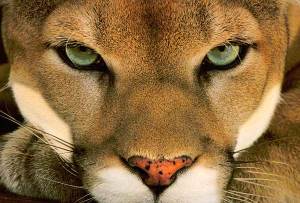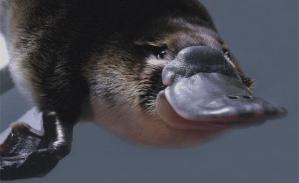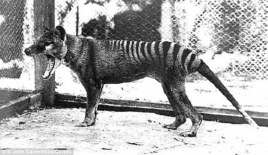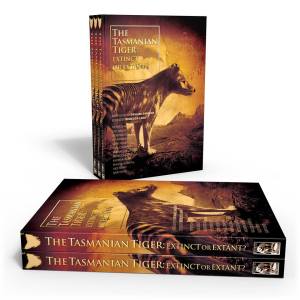 The Australian outback is the home for some of the most unusual animals in the world and, in the years that I have lived here I have been lucky enough to meet many of the unique fauna of Terra Australis while rambling about in the bush. Most people think of animals like kangaroos and koalas in association with Australia and the Great Southern Land also has a reputation for being the home of some of the most deadly snakes and spiders on the planet. As unusual and deadly as these better known animals are, the Aussie bush hides a myriad of less well known creatures that are often even more bizarre than the emu and kangaroo that appear on the Commonwealth coat of arms.
The Australian outback is the home for some of the most unusual animals in the world and, in the years that I have lived here I have been lucky enough to meet many of the unique fauna of Terra Australis while rambling about in the bush. Most people think of animals like kangaroos and koalas in association with Australia and the Great Southern Land also has a reputation for being the home of some of the most deadly snakes and spiders on the planet. As unusual and deadly as these better known animals are, the Aussie bush hides a myriad of less well known creatures that are often even more bizarre than the emu and kangaroo that appear on the Commonwealth coat of arms.
Giant Lizards and Egg Laying Mammals
The central regions of Australia are broad deserts where only the toughest critters survive and lizards are among the biggest native fauna that live in these remote parts of the bush. The largest lizards that I have encountered in the bush is the Lace Monitor, called a Goanna by locals, that can reach a length of over six feet from the tip of their nose to the end of their tail. These fearsome reptiles are armed with seriously long, sharp talons that they use for climbing as much as for disemboweling prey.
The largest one that I ever saw lived at a camp grounds (and still does I am sure, goannas are very long lived) in a National Park in the desert behind Hattah and it was easily seven feet long. It waited for a group of people to lay out a picnic dinner before emerging fearlessly from its home in a hollow log, jumping onto the picnic table and devouring several kilograms of sausages. The goanna was totally unperturbed by the people, or their feeble efforts to rescue their sausages, and when it had finished its repast it sauntered back into its log untroubled by the audience that it had attracted and secure in the knowledge that nobody would bother it while it slept off the meal.
Perhaps the most unusual animals in Australia are the monotremes, mammals that lay eggs. There are only a couple of species of creatures in this order, the Platypus (Ornithorhynchus anatinus) commonly called the duck-billed platypus because of the shape of its snout, and the Echidna (Tachyglossus aculeatus), also commonly called the spiny anteater. Platypii are elusive animals that live in the banks of creeks and rivers but even so I have been lucky enough to spot a couple. Echidnas are more common (although there is really nothing very common about them) and I have met a few going about their business in the bush.
In my youth I was staying on a farm and, during a prolonged rainstorm, a spiny anteater took up residence in the sheltered woodpile where it found a log infested with ants that had inadvertently been thrown into the stack. The echidna was happily licking up the ants when the farm’s cattle dogs and a favored pet Dalmatian came across it and bailed it up. The echidna rolled itself into a tight ball of sharp spines and each of the dogs took a turn impaling themselves on its impregnable defenses. Interestingly, the smart working dogs were content with only one or two painful attempts while the papered pooch took significantly longer to it figure out!
Beasts that Time Forgot (in Tasmania)
The southernmost extremity of the Australian continent is a large island called Tasmania that is a triangle shaped, mountainous outcrop of wilderness at the edge of the Great Southern Ocean. Because Tasmania has been isolated form continental Oz for about 30,000 years many of the animals that inhabit its impenetrable bush are unique. Thanks to Looney Tunes the whole world has heard of the Tasmanian Devil (Sarcophilus harrisii) and are familiar with its formidable reputation. Pound for pound it is one of the most formidable predators in the world with an impressive set of teeth and jaws that generate one of the strongest bites (125 pound-feet/553N) per body mass of any living animal. As impressive as the Tassie Devil may be, until it was hunted into extinction, the Tasmanian Tiger (Thylacinus cynocephalus) was an even more imposing predator.
In the book The Tasmanian Tiger- Extinct or Extant, a collection of dissertations edited by Rebecca Lang, the story of the Tassie Tiger is explored and the evidence for its continued existence is examined. When the Apple Isle was first settled the Thylacine was considered to be a dangerous pest and was blamed for killing stock which led to a bounty that all but ensured that this beautiful, elusive creature was hunted to extinction. The last Tasmanian Tiger in captivity died in the 1930s and gradually sightings of the beast in the wild diminished until its demise was declared officially in the 1980s. Nonetheless, tales of encountering Thylacines have continued, casting doubt on claims that it has been wiped out and initiating a groundswell of support for studies to find surviving specimens and to protect them with a view to repopulation.
Exotic Intruders and Mythical Predators
 Perhaps the greatest threat to Australia’s delicate isolated ecosystem has been the introduction of several species of animals from other parts of the world. These feral animals have been both deliberately and accidentally released into the bush and often have a devastating effect on the indigenous fauna. Many of the small northern hemisphere animals like rats and mice and rabbits have multiplied to plague proportions in Australia due to a lack of their natural predators to keep their numbers in check. Often, the pest control measures that were used to combat the spread of these feral animals, like the introduction of foxes to limit rabbit populations in the mid 1800s, has simply compounded the problem. One of the most famous environmental disasters of this sort was the introduction of the Cane Toad to the sugarcane fields which were supposed to devour an insect pest and instead took up a diet of native creatures, totally ignoring the original target species. Of course domestic animals like dogs and cats have also escaped into the bush and become feral, generally rising to the top of the food chain because of the lack of any real competition for their superior hunting skills. In addition, there are several more exotic creatures that now inhabit the outback like camels, water buffalo and wild horses.
Perhaps the greatest threat to Australia’s delicate isolated ecosystem has been the introduction of several species of animals from other parts of the world. These feral animals have been both deliberately and accidentally released into the bush and often have a devastating effect on the indigenous fauna. Many of the small northern hemisphere animals like rats and mice and rabbits have multiplied to plague proportions in Australia due to a lack of their natural predators to keep their numbers in check. Often, the pest control measures that were used to combat the spread of these feral animals, like the introduction of foxes to limit rabbit populations in the mid 1800s, has simply compounded the problem. One of the most famous environmental disasters of this sort was the introduction of the Cane Toad to the sugarcane fields which were supposed to devour an insect pest and instead took up a diet of native creatures, totally ignoring the original target species. Of course domestic animals like dogs and cats have also escaped into the bush and become feral, generally rising to the top of the food chain because of the lack of any real competition for their superior hunting skills. In addition, there are several more exotic creatures that now inhabit the outback like camels, water buffalo and wild horses.
Since these feral animals have become so common in the outback there have been recurring legends of even more exotic species that have been introduced to the landscape that are as dangerous as any of the native predators- big cats. In their book Australian Big Cats an Unnatural History of Panthers, Rebecca Lang and her partner Michael Williams give a detailed account of these tall bushman’s tales of large black cats roaming in the remote wilderness areas of Australia, picking off hapless sheep and cattle. These myths have circulated in the bush for years and while I was living in Central Victoria in the mid 1980s the most common version was that American Air Force units stationed in western Victoria during WWII had brought Cougar cubs with them as mascots, releasing them into the bush when they deployed to the front and establishing a breeding colony of pumas in Oz.
 Australian Big Cats supplies a number of alternative stories, the most common one involving the crash of a circus train on the outskirts of some remote outback town that resulted in the big cats escaping and the whole incident being hushed up to avoid official investigations. The evidence presented in the book makes a convincing argument for the existence of large cats in the bush and advances several theories about not only how they came to be there, but also which particular species fits the profile of the hundreds of sightings. While pumas seem to be the most likely, the possibility that there may be jaguar or even leopard living in the bush is something of a sobering thought. Until I read Lang and Williams’ book I was under the impression that the great outdoors in the Aussie bush was a fairly innocuous place to pitch a tent- finding out that a jaguar may be watching me barbeque my steaks for dinner from the shadows of the mulga scrub, waiting for me to climb into my swag for the night has certainly changed my ideas about camping out under the stars.
Australian Big Cats supplies a number of alternative stories, the most common one involving the crash of a circus train on the outskirts of some remote outback town that resulted in the big cats escaping and the whole incident being hushed up to avoid official investigations. The evidence presented in the book makes a convincing argument for the existence of large cats in the bush and advances several theories about not only how they came to be there, but also which particular species fits the profile of the hundreds of sightings. While pumas seem to be the most likely, the possibility that there may be jaguar or even leopard living in the bush is something of a sobering thought. Until I read Lang and Williams’ book I was under the impression that the great outdoors in the Aussie bush was a fairly innocuous place to pitch a tent- finding out that a jaguar may be watching me barbeque my steaks for dinner from the shadows of the mulga scrub, waiting for me to climb into my swag for the night has certainly changed my ideas about camping out under the stars.























